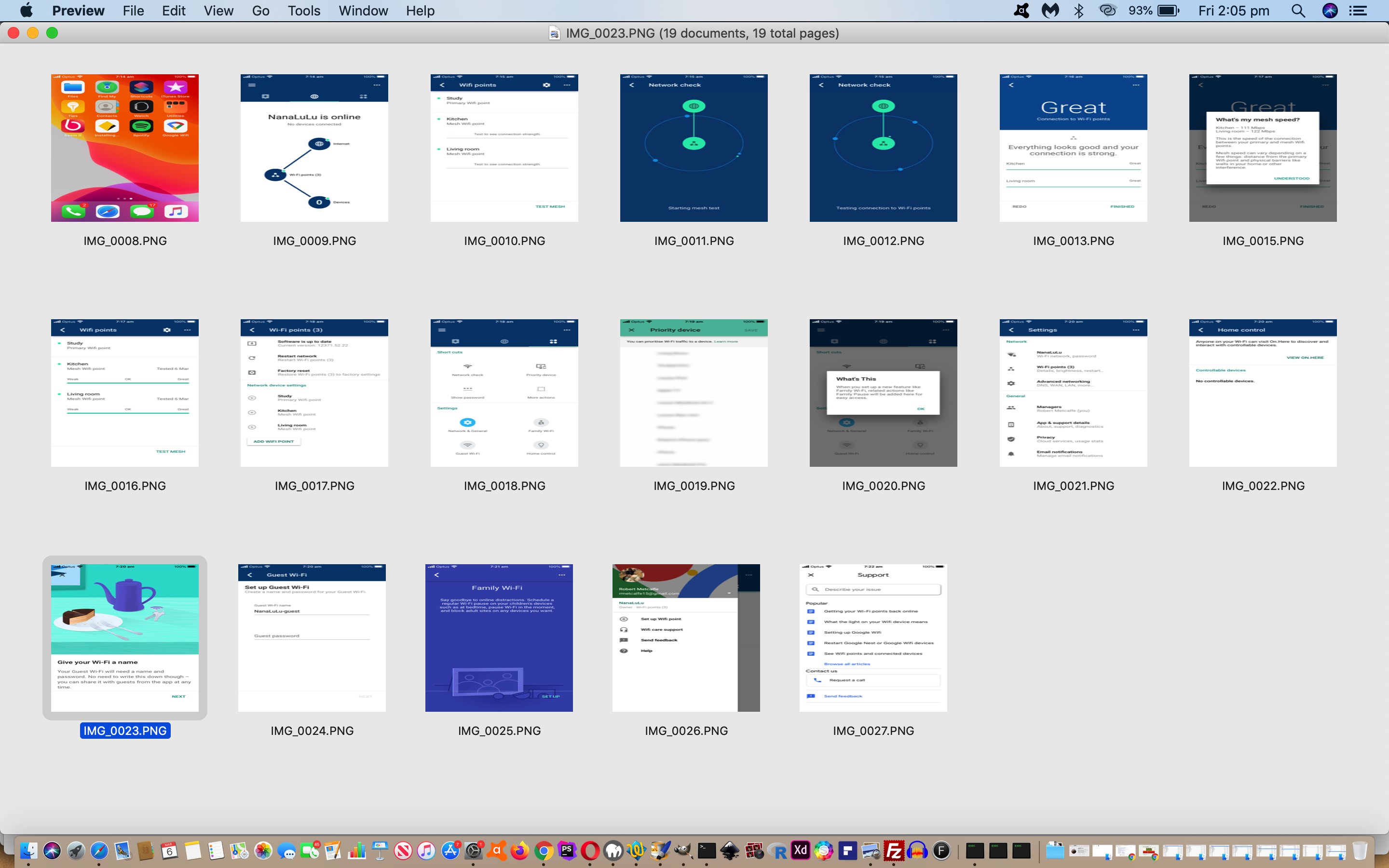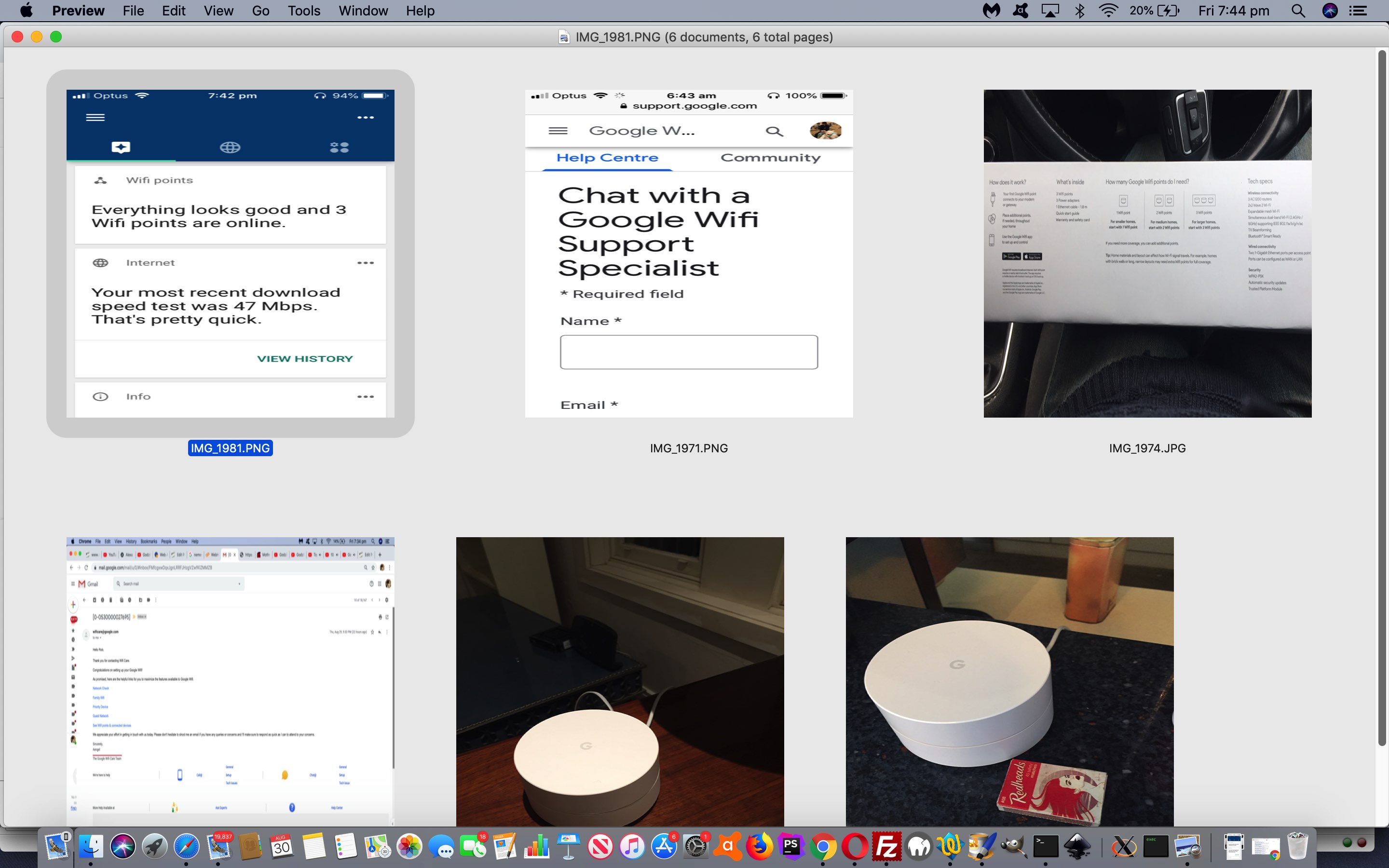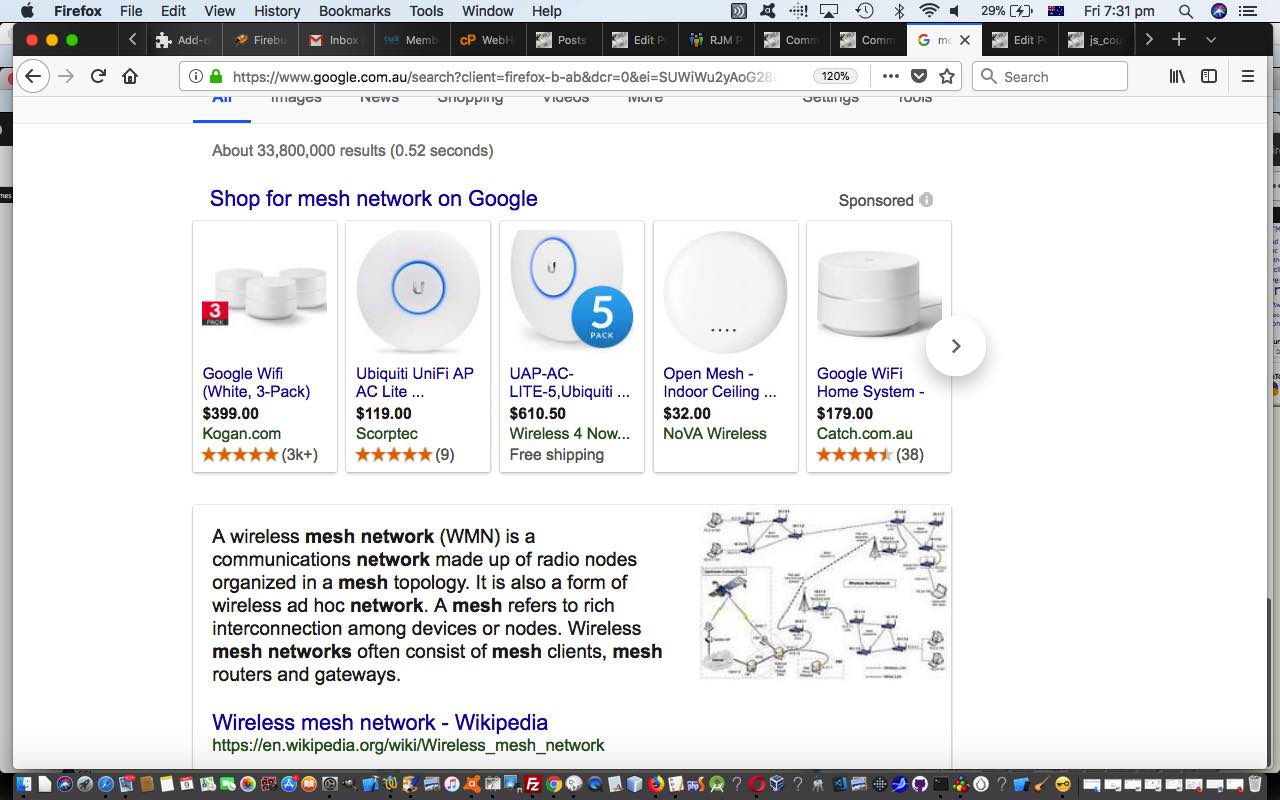It’s been a bit more than six months since we upgraded the WiFi arrangements around here (for rjmprogramming.com.au office) to use …
- mesh networking … specifically …
- Google WiFi hardware and networking software
… as last talked about with Google WiFi Mesh Networking Primer Tutorial, and any six month report we’d give would have to be glowing.
There haven’t been many issues, except once we used the Google WiFi mobile app on our iPhone (that came with the Google WiFi installation) to reconsider (is it) “node” placements (for 3 “points”) to retest the network for optimal use of the streaming television at the back of the house, and the app went away and improved on itself a little, about two months ago.
So, what of this “app”? We are impressed. This is not a matter you should “wing it” about, when there has been a good product provided to you for tweaking (up to overall reassessment).
As such, we’d like to show you a “stream of consciousness” PDF presentation as a means whereby …
- if you have a Google WiFi mesh network, and are winging it, you see what you’re missing … or …
- need to know what to expect of a seamless mesh networking product … versus …
- thinking of installing a mesh network in your office/home
… for your perusal, and curiosity. There is another point here too. In this “age of disruption” regarding getting online work done, if you can rule out a link in the chain of what has to work, as completely reliable, it can get you concentrating on what is important, and needs the attention, and perhaps appreciating the things that work, and are quiet about it?!
Previous relevant Google WiFi Mesh Networking Primer Tutorial is shown below.
Do you remember when we discussed WiFi mesh networks when we presented Mesh Networking Primer Tutorial? Well, we changed our in-house WiFi arrangements (from the use of a WiFi Router Extender, when we presented Home Network Wireless Wi-Fi Router Extender Tutorial) here at RJM Programming, thanks team. We’ve installed a Google WiFi mesh network we’ve noticed has improved all of …
- Extended range of good connections around the building
- Faster response time on the net
- Faster download and upload test results (you can test for yourself at the Google WiFi mobile app, as required)
We hasten to add here, this did not involve changes to NBN (here in Australia), and so nothing getting to the building has changed, and the NBN router at the top of the building remains as the conduit to the internet. That, quite patently, is not the end of the story regarding getting an overall good result with your online connection speed and productivity. You can improve the in-house network design in multiples of efficiency, we can certainly state after a day of non-buffering and no dropouts on Netflix and Stan in any room of the building. It costs, of course, but hardware is rarely free, and the installation support from Google is excellent, and the Google WiFi “meshers” are kind of cute, even cuter than Godzilla’s nemeses wouldn’t you say?!
Previous relevant Mesh Networking Primer Tutorial is shown below.
Here, in Australia, a lot of us are turning our attention to the impacts of the National Broadband Network we are currently undertaking. With this in mind, attention goes towards improving the internal WiFi systems of the residence in question.
And that is where the concept of “mesh networking” comes to the fore. Before we go on, though, we cannot pretend to know more than PC & Tech Authority’s April, 2018 edition’s “Mesh Networking … Your Questions Answered” shows and answers. There they road test the following “mesh networking” systems …
- Asus Lyra
- Devolo GigaGate
- Google WiFi
- Linksys Velop
- Netgear Orbi
- TP-Link Deco M5
- Ubiquiti AmpliFi HD
… so will leave you to read their article to get those road test results. But this may be “jumping the gun” for many of us. Let’s define, all thanks to PC & Tech Authority’s April, 2018 edition’s “Mesh Networking … Your Questions Answered” …
What is “mesh networking”?
“Mesh networking” has the same basic principle as wireless repeaters or extenders (which we have one of in our 9 room house, presently, and as you can read about at Home Network Wireless Wi-Fi Router Extender Tutorial) that sit in rooms a bit away from the router in the WiFi Wireless network within your residence. These wireless repeaters piggyback on the existing wireless network, but “mesh networking” use private radio channels (backhauls) to …
- create better performance on public network
- have less contention
- not standalone like extenders, but form multiple nodes helped out by neighbours rather than needing that connection back to base … and so …
- easier to extend over larger areas
How much is “mesh networking” going to cost me here in Australia?
Depending on how many nodes, say if it was 2-3 nodes, the price would probably be in the range A$200 to A$650.
Does a “mesh networking” replace existing routers?
Mostly, yes, but doesn’t have to if the router can be switched into modem mode or bridge mode. Obviously if “mesh network” is set up to replace an existing router then you need to have at hand that router’s admin username and password(s) before trying to reconfigure anything.
What coverage per node should you expect with most “mesh networking” systems?
Two or three nodes can often cover 400m2 but this is a bit determinant on the position of fridges and walls.
Are the speedier more expensive “mesh networking” systems overkill?
If an Internet connection of 40Mbits/sec suits your purposes, just about all the products will work for that. “Mesh networking”, though, could well be an investment for the future requirements.
Is it easy to set up “mesh networking”?
Most have a smartphone app to help. The “mesh networking” nodes often talk back to the smartphone app via bluetooth to help the setup also.
Want to do your research online? You could do worse than read Wikipedia’s Wireless Mesh Network webpage, thanks.
If this was interesting you may be interested in this too.
If this was interesting you may be interested in this too.
If this was interesting you may be interested in this too.





